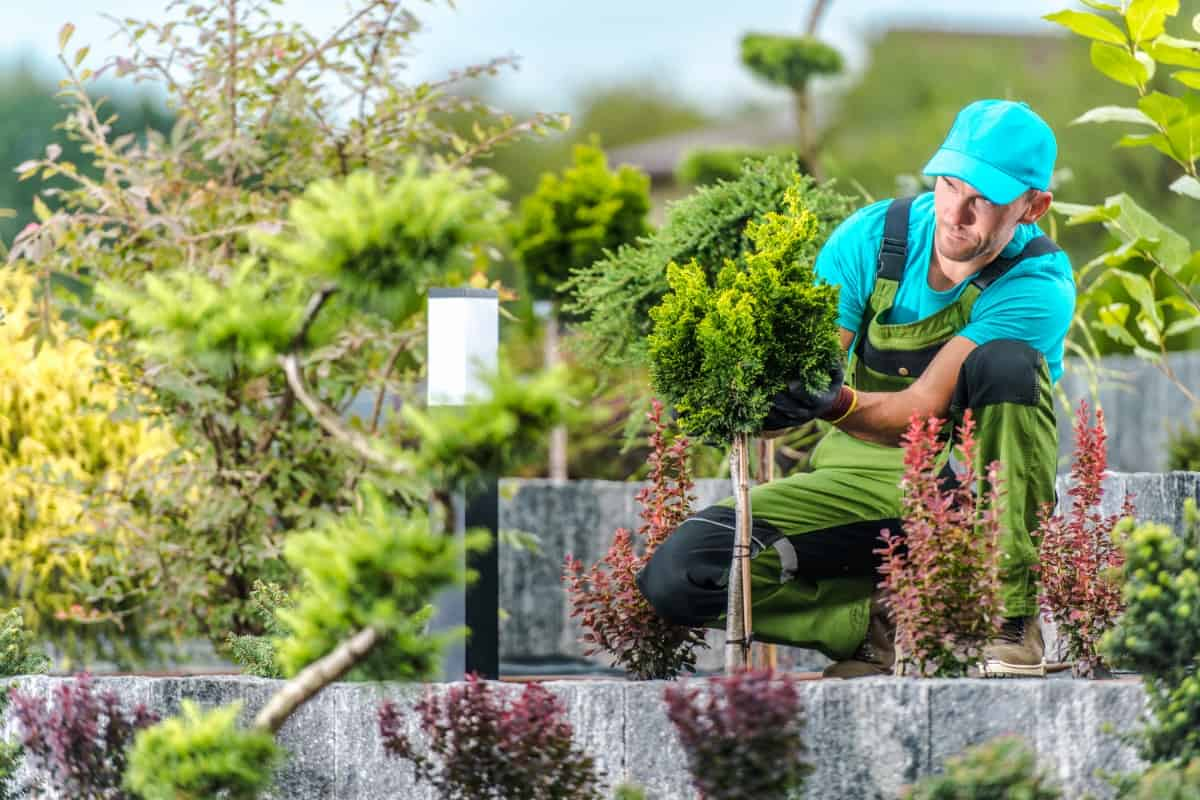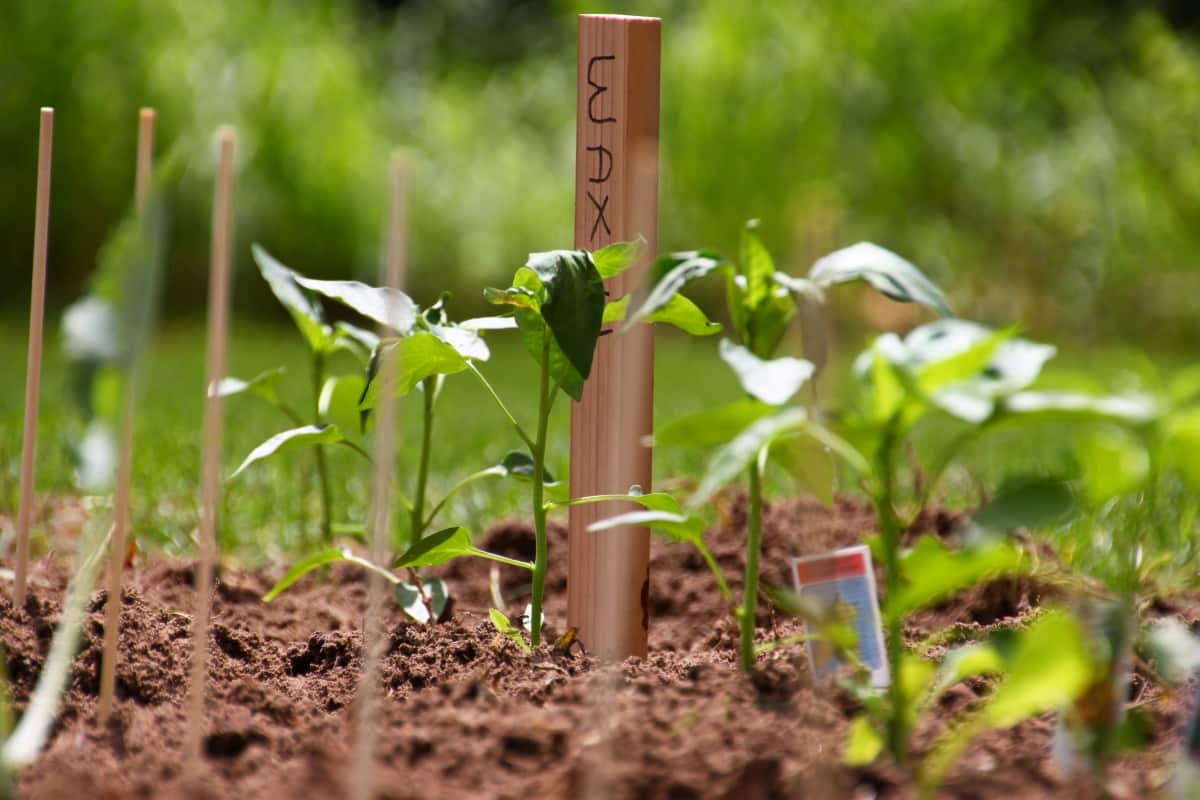Bushy plants have a dense, full appearance with many leaves and stems. They can add dimension to your indoor or outdoor space, creating a lush, visually appealing, and calming environment. Many people choose bushy plants as an alternative to larger trees or shrubs because of their manageable size. Plant training is a process of manipulating the growth and shape of plants to achieve a desired outcome.

It involves guiding the plant’s growth through targeted pruning, bending, tying, or staking techniques. The purpose of this technique is to control the plant’s size, shape, and overall appearance. Training your plants can promote strong branches supporting heavy blooms or fruits. This technique also helps in developing fuller foliage with an increased number of flowering sites. Plant training can be particularly useful for indoor growers who have insufficient space to work with.
How to Train Plants to Become Bushy
Benefits of Training a Plant to Become Bushy
You might want to train your plants to become bushy for several reasons. For one, a bushier plant means more foliage and more branches which can lead to higher yields of fruits or flowers. Additionally, a bushy plant is usually more aesthetically pleasing and can make an attractive addition to any room. Another reason you may train your plants into a bushier form is because it allows for better light penetration throughout the entire plant.
This helps in photosynthesis, leading to healthier growth and also helping with pest control since there will be no areas where pests can hide from detection. Moreover, training your plants can save space by creating a compact structure that takes up less horizontal space while retaining its high yield potential.
It also makes pruning easier since all the foliage is concentrated in one area of the plant rather than being spread out haphazardly. Training your plants into a desirable shape provides an opportunity for personal creativity allowing gardeners and enthusiasts alike to express their creative side through gardening while achieving efficient and productive results at the same time.
The Different Methods of Training Plants
When it comes to training plants, you can use a few different methods. The first is pruning, which involves removing certain parts of the plant to boost bushier growth. This can include cutting back the main stem or branches and removing dead or damaged leaves. Another method is pinching, where you remove the tips of young shoots on the plant with your fingers. This will create new growth at that point, resulting in a fuller and more bushier appearance. Topping involves cutting the top of the main stem.
In case you missed it: Tips for Making Plants Bushy Indoors

This will cause more lateral branching and result in a bushier plant overall. Some growers use training wires or stakes to manipulate the shape of their plants as they grow. You can gently bend stems and tie them down in certain directions to encourage even growth throughout your plant. Every method has advantages and disadvantages depending on what plant you’re working with and how much time you have for maintenance. It’s worth experimenting with different techniques to find the best for your specific needs.
Tips to Train Plants to Become Bushy
Training your plants to become bushy is the best way to increase yields and improve the overall health of your garden. First, start by pruning your plant early on in its growth cycle. Removing any small branches or leaves that are not contributing to the plant’s overall structure will help it focus its energy on developing more branches and foliage. Next, consider using low-stress training methods like tying down or bending branches gently with string or wire. This will encourage lateral growth and create a fuller, bushier appearance.
Another effective method is topping, removing the topmost portion of the main stem, promoting lateral growth, and allowing light penetration deep into the canopy. Ensure adequate lighting and nutrients for your plants as they grow to support healthy development. Nitrogen is essential for leafy growth, so include nitrogen-rich fertilizers or compost when feeding your plant.
Phosphorus promotes strong root systems necessary for healthy and robust plants. Potassium helps with overall plant health, including disease resistance and stress tolerance. It also encourages flower production in some species. Aside from commercial fertilizers, organic options like fish emulsion or bone meal are natural sources of these essential macronutrients. Providing your plants with proper nutrition will help them achieve optimal bushiness and overall health.
With these strategies, you’ll be well on your way toward growing thriving, bushy plants. It’s also important not to stress out your plant too much by overtraining or starting too early. Ensure your plant is healthy and established before beginning any training techniques. Understanding the optimal timing for training your specific type of plant can help you achieve a fuller and bushier appearance in the long run.
Best Time to Start Training Your Plant
When training your plants to become bushy, timing is everything. Ideally, you want to start training your plant when it’s still young and has plenty of growing time before reaching maturity. This allows you to shape the plant as it grows rather than trying to correct its growth pattern later on.
In case you missed it: How to Make Rose Plant Bushy: Best Homemade Fertilizers, Composting, and Pruning Tips

The best time to start is usually during the vegetative growth stage when plants are actively producing new leaves and stem. They’re more flexible and responsive to training techniques like pruning or tying down branches at this stage. However, remember that some plants may respond better at different stages of growth depending on their specific needs. For example, some plants may benefit from early topping, while others may need a few weeks of growth first.
Conclusion
Plant training is an effective way to make your plants grow fuller and bushier. There are different methods of training plants, each with its benefits and drawbacks. You should choose the perfect method for your specific plant type and start training immediately. You can transform your leggy or sparse-looking plants into healthy, flourishing ones with patience, dedication, and creativity. Remember that every plant is unique, so don’t afraid to experiment with various techniques until you find what works best for you.
- Feed Your Flock for Less: Top 10 Tips to Save on Chicken Feed
- Ultimate Guide to Ossabaw Island Hog: Breeding, Raising, Diet, and Care
- Hatching Answers: The Top 10 Reasons Your Chickens Aren’t Laying Eggs
- Eggs and Economics: Breaking Down the Cost of Raising Backyard Chickens
- Defend Your Greens: Proven Methods to Keep Iguanas Out of Your Garden
- Ultimate Guide to Cinnamon Queen Chicken: A Comprehensive Guide for Beginners
- Ultimate Guide to California Tan Chicken: Breeding, Raising, Diet, Egg-Production and Care
- Ultimate Guide to Marsh Daisy Chicken: Breeding, Raising, Diet, and Care
- 10 Types of Chicken Farming Businesses You Can Start for Profits